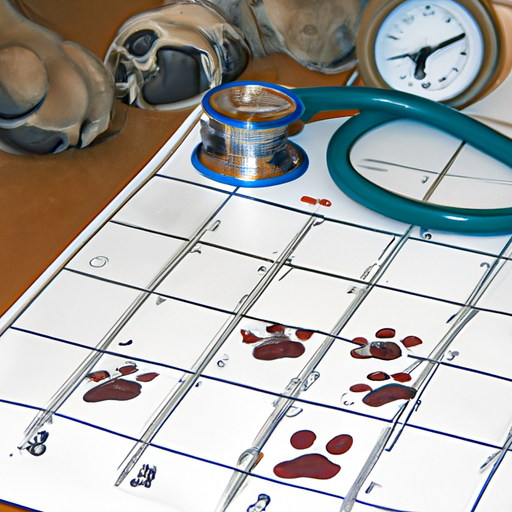As a caregiver to your furry friend, understanding the nuances of their health is paramount. This includes being informed about their reproductive health. Understanding your dog’s menstrual cycle can help you provide the best care possible.
Understanding the Dog’s Menstrual Cycle
Dogs have a different menstrual cycle compared to humans. They go through what is known as an estrous cycle, which happens roughly every six months. The cycle is divided into four stages:
- Proestrus: This stage lasts for about nine days. The dog will start to attract males, but isn’t yet ready to mate.
- Estrus: This is the mating stage, lasting for approximately nine days. The dog is now receptive to males.
- Diestrus: This stage can last for 60 to 90 days, whether or not the dog is pregnant.
- Anestrus: The final stage, this is a period of sexual inactivity lasting for about 130 to 150 days.
Recognizing the Signs of a Dog’s Menstrual Cycle
As a caregiver, it’s important to recognize the signs of your dog’s cycle. Here are a few signs to look out for:
- Swelling of the vulva
- Changes in behavior
- Spotting or bleeding
How to Care for Your Dog During Their Cycle
During their cycle, your dog may require extra care and attention. Here are some tips to help you provide the best care:
- Keep them comfortable: Ensure they have a clean and comfortable space to rest.
- Watch their diet: Some dogs may eat less during their cycle. Monitor their eating habits and ensure they are getting enough nutrition.
How to Prevent Pregnancy in Dogs
If you’re not looking to expand your furry family, there are several ways to prevent pregnancy in dogs:
- Spaying: This is a permanent solution that involves removing the dog’s reproductive organs.
- Contraceptive pills: These are temporary solutions that prevent pregnancy for a specified duration.
FAQ
Q: How often does a dog go through their menstrual cycle?
A: Typically, a dog will go through their cycle every six months.
Q: How can I tell if my dog is in their cycle?
A: Look out for signs such as swelling of the vulva, changes in behavior, and spotting or bleeding.
Q: What can I do to make my dog more comfortable during their cycle?
A: Ensure they have a comfortable space to rest and monitor their eating habits to ensure they are getting enough nutrition.
Q: How can I prevent pregnancy in my dog?
A: You can consider options like spaying or contraceptive pills.
Understanding your dog’s menstrual cycle can help you provide proper care and attention during this time. Remember, every dog is unique, so it’s always a good idea to consult with a vet if you have any concerns.



